So even though this mundane chore of pruning household plants might not interest you, dear reader, someone out there on the world wide web might be searching for just this topic that will make me a long distance teacher. Here goes.
HOW TO PRUNE A PHILODENDRON
If your plants are getting leggy, with too few leaves along the stem, or if the leaves are spaced out too far apart and it looks like the stem is becoming thick, scissor intervention is necessary. Now is the time to be ruthless, all for the good of the plant. See how large the plant is? See the stems?
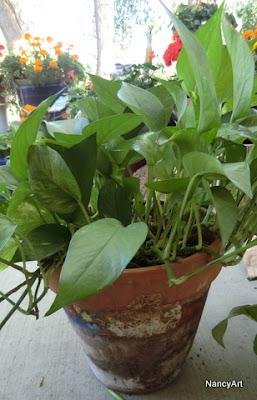
OK: now for a closer look at the roots and you can really see those legs that appear anemic, woody, and too close together. Tsk, tsk.
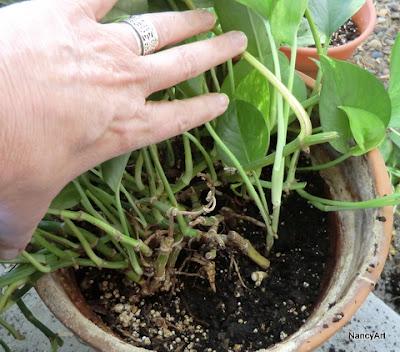
Next step: get out some new potting soil, some jars with water for sustaining your cuttings, a pair of scissors, and an aggressive attitude.
Take out the soil and plant from the pot, cut through those roots, discard the old roots at the bottom of the plant, and start your cutting.
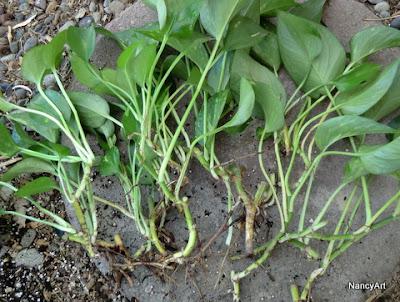 Ensure that you have a nodule at the end with a bit of a root attached as this will help the root cutting adapt to the new soil.
Ensure that you have a nodule at the end with a bit of a root attached as this will help the root cutting adapt to the new soil.Discard all the leggy runners. Keep the shorter stems, again ensuring that a nodule is attached. You should cut off leaves close to the nodule because you do not want any green leaf touching the water where they will stay until new roots have developed.
From just one plant, here is a picture of the salvaged leaves now in water awaiting new roots to grow.
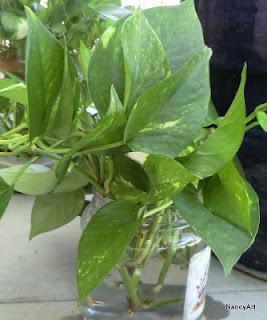
With those stems that have been trimmed, roots longer than two inches mercilessly cut off from the main stem, they can be buried into the new potting soil. Add even more soil to the top to ensure stability of the stem. Here are two of the newly potted plants, looking much healthier and with more room to breathe.
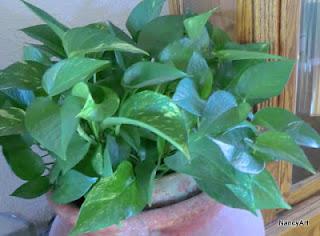
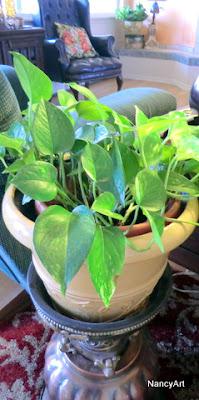
From three plants I re-potted yesterday, we now have five jars of leaf and stem cuttings in water awaiting their roots to develop. One jar is on the kitchen windowsill and the other four are tucked away in filtered light awaiting the same fate. Maybe we should go into philodendron farming since there are so many awaiting future planting. Would you like to adopt a jar? Free for the taking!
